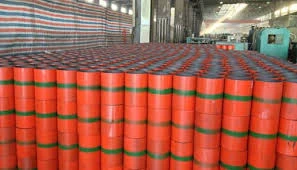- Afrikaans
- Albanian
- Amharic
- Arabic
- Armenian
- Azerbaijani
- Basque
- Belarusian
- Bengali
- Bosnian
- Bulgarian
- Catalan
- Cebuano
- Corsican
- Croatian
- Czech
- Danish
- Dutch
- English
- Esperanto
- Estonian
- Finnish
- French
- Frisian
- Galician
- Georgian
- German
- Greek
- Gujarati
- Haitian Creole
- hausa
- hawaiian
- Hebrew
- Hindi
- Miao
- Hungarian
- Icelandic
- igbo
- Indonesian
- irish
- Italian
- Japanese
- Javanese
- Kannada
- kazakh
- Khmer
- Rwandese
- Korean
- Kurdish
- Kyrgyz
- Lao
- Latin
- Latvian
- Lithuanian
- Luxembourgish
- Macedonian
- Malgashi
- Malay
- Malayalam
- Maltese
- Maori
- Marathi
- Mongolian
- Myanmar
- Nepali
- Norwegian
- Norwegian
- Occitan
- Pashto
- Persian
- Polish
- Portuguese
- Punjabi
- Romanian
- Russian
- Samoan
- Scottish Gaelic
- Serbian
- Sesotho
- Shona
- Sindhi
- Sinhala
- Slovak
- Slovenian
- Somali
- Spanish
- Sundanese
- Swahili
- Swedish
- Tagalog
- Tajik
- Tamil
- Tatar
- Telugu
- Thai
- Turkish
- Turkmen
- Ukrainian
- Urdu
- Uighur
- Uzbek
- Vietnamese
- Welsh
- Bantu
- Yiddish
- Yoruba
- Zulu
Understanding the Specifications and Measurements of Bull Plug Dimensions for Various Applications
Understanding Bull Plug Dimensions A Comprehensive Guide
Bull plugs are essential components widely used in various industries, particularly in the fields of oil and gas, plumbing, and manufacturing. These fittings are designed to serve as temporary closures for pipelines, allowing maintenance, testing, and inspections to take place without the risk of fluid leakage. Selecting the right bull plug dimensions is crucial to ensure proper fit, functionality, and safety. In this article, we will delve into the various aspects of bull plug dimensions, their significance, and how to choose the appropriate size for your specific application.
What is a Bull Plug?
A bull plug is a type of pipe plug that features a rounded or bulbous end, designed to fit snugly into the opening of a pipe or fitting. It is commonly utilized in situations where a permanent seal is not required, allowing for easy removal and reinstallation. Bull plugs are typically made from durable materials such as brass, stainless steel, or plastic, depending on the application and environmental conditions.
Importance of Correct Dimensions
Choosing the correct dimensions for a bull plug is critical for several reasons
1. Leak Prevention Inadequate sealing due to poorly fitting plugs can lead to leaks, which may result in environmental contamination, safety hazards, and increased maintenance costs.
2. Pressure Management Bull plugs are often used in high-pressure applications. The correct dimensions ensure that the plug can withstand the pressure exerted by the fluid within the pipeline, preventing failures or blowouts.
3. Compatibility Different pipelines and fittings have unique dimensions. Selecting a bull plug that matches the pipe diameter and thread size is essential for compatibility, thereby facilitating effective sealing.
4. Material Suitability In addition to size, the material of the bull plug must also be compatible with the medium being contained. For instance, corrosive substances require plugs made from resistant materials to prevent degradation.
Standard Bull Plug Dimensions
Bull plug dimensions can vary significantly based on the type of pipeline they are designed for. Typically, dimensions are specified by diameter and thread size. Here are some common standards used in various industries
bull plug dimensions

- NPT (National Pipe Thread) A widely used standard in the United States, where dimensions are expressed in inches. Common sizes include ¼”, ½”, ¾”, and larger diameters.
- BSP (British Standard Pipe) A standard used primarily in the UK and other countries, also available in various sizes including ½”, ¾”, and 1”.
- Metric Sizes In many industrial applications, especially in Europe, metric sizes are employed, ranging from M10 to M100, indicating the thread size and pitch.
How to Choose the Right Bull Plug
When selecting the appropriate bull plug dimensions, consider the following factors
1. Pipe Size Measure the inside diameter of the pipe to determine the correct size of the bull plug.
2. Thread Type Identify whether the pipe has NPT, BSP, or metric threads to ensure proper fitting.
3. Material Selection Choose a material that is compatible with the fluid and environmental conditions, ensuring longevity and safety.
4. Application Requirements Consider the pressure and temperature conditions of the application, as these factors can affect the performance of the plug.
5. Regulatory Standards Ensure compliance with relevant industry standards and regulations, which may dictate specific requirements for sealing fittings.
Conclusion
In conclusion, understanding bull plug dimensions is pivotal for ensuring effective sealing and safe operation in various applications. By paying careful attention to the size, thread type, and material, you can select the right bull plug that meets your specific needs. As industries continue to innovate and evolve, staying informed about the latest standards and best practices in bull plug selection will enhance operational efficiency and safety.
-
Tubing Pup Joints: Essential Components for Oil and Gas OperationsNewsJul.10,2025
-
Pup Joints: Essential Components for Reliable Drilling OperationsNewsJul.10,2025
-
Pipe Couplings: Connecting Your World EfficientlyNewsJul.10,2025
-
Mastering Oilfield Operations with Quality Tubing and CasingNewsJul.10,2025
-
High-Quality Casing Couplings for Every NeedNewsJul.10,2025
-
Boost Your Drilling Efficiency with Premium Crossover Tools & Seating NipplesNewsJul.10,2025







